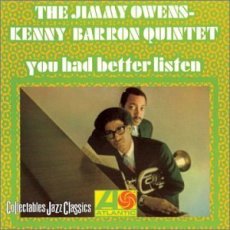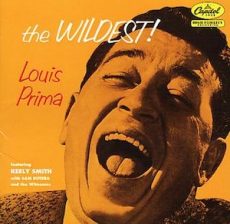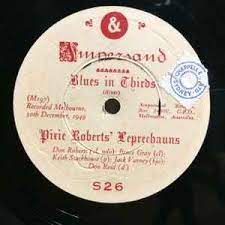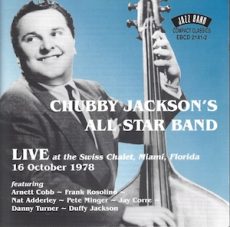
Daily Dose Of Jazz…
Jimmy Owens was born December 9, 1943 in New York City, New York. In the 1960s, he was a member of the hybrid classical and rock band Ars Nova, and then became a member of the New York Jazz Sextet playing with at times were Sir Roland Hanna, Ron Carter, Billy Cobham, Benny Golson, Hubert Laws, and Tom McIntosh.
Between 1969 and 1972, Jimmy was a sideman on the David Frost Show under musical director Dr. Billy Taylor. During this stint he played alongside Frank Wess, Seldon Powell Barry Galbraith and Bob Cranshaw.
As an educator Jimmy is an active member of the jazz education community, sitting on the board of the Jazz Foundation of America and the Jazz Musicians’ Emergency Fund to help individual musicians.
Over the course of his career the trumpeter, composer, arranger, lecturer and music education consultant has performed and recorded as a leader and sideman with Lionel Hampton, Charles Mingus, Archie Shepp, Joe Zawinul, Gerald Wilson, Duke Ellington, Hank Crawford, Dizzy Gillespie, Count Basie and Herbie Mann among many others.
Trumpeter, composer, arranger and educator Jimmy Owens, who sits on the board of the Jazz Foundation of America, since 1969, he has led his own group, Jimmy Owens Plus.
More Posts: arranger,bandleader,composer,educator,history,instrumental,jazz,music,trumpet

Daily Dose Of Jazz…
Louis Leo Prima was born December 7, 1910 in New Orleans, Louisiana into a musical Italian American family. His mother, a music lover, made sure that each child played an instrument, assigning him the violin and started out playing at St. Ann’s Parish. His interest in jazz came when he heard black musicians, including Louis Armstrong at a time Italians and Blacks in New Orleans frequently socialized together in the same clubs and bars.
He practiced continuously on his worn-down cornet and formed a band in 1924 with his childhood friends, bassist Candy Candido, Irving Fazola on clarinet and drummer Johnny Viviano. Prima attended Jesuit High School but transferred to Warren Easton High in 1926. There he played with the Eastonites, the school band. The next year he partnered with fellow musician Frank Federico and they played in the French Quarter.
By 1928 his decision was made to become a professional musician. After finishing high school he joined the Ellis Stratako Orchestra in 1929 then the Joseph Cherniavsky Orchestrafollowed by a temporary job playing on the steamship Capital that docked on Canal Street. His first break was when Lou Forbes hired him for daily afternoon and early evening shows at The Saenger.
1934 saw him begin recording for the Brunswick label. He recorded That’s Where the South Begins, Long About Midnight, Jamaica Shout, and StarDust. Prima and his New Orleans Gang featured Frank Pinero playing piano, Jack Ryan bass, Garrett McAdams guitar, and Pee Wee Russell clarinet. at the Famous Door. HIs recordings from 1935 were a combination of Dixieland and swing. He and Russell recorded The Lady in Red, a national jukebox hit. They also recorded Chinatown, Chasing Shadows and Gypsy Tea Room.
Martha Raye played a role in Prima’s professional and personal life and with her got his first national debut on The Fleischman Hour. He recorded Sing, Sing , Sing in 1936, which subsequently became a hit for Benny Goodman. Moving to California he expanded his music, joining the movement for big bands and orchestras. However for him the configuration was not successful.
He returned to New York City in 1937 with his quintet at the Famous Door. Then on to Billy Rose’s Casa Mañana club in 1938, earning nearly a quarter million dollars throughout seven weeks. This led to an East Coast to mid-West tour. During the war years, Louis was experiencing great success regardless of anti-Italian sentiment. He would go on to have several big hits but by the end of the war years, the popularity of big band music was diminishing. By 1947 he was playing more jazzy versions of his music for the next decade and a half.
Trumpeter, singer, entertainer and bandleader Louis Prima suffered a heart attack in 1973. Two years later he was diagnosed with a brain stem tumor, suffered a cerebral hemorrhage, went into a coma following surgery and never recovered. He moved back to New Orleans and transitioned three years later on August 24, 1978 at 67 in his hometown.
More Posts: bandleader,history,instrumental,jazz,music,trumpet

Daily Dose Of Jazz…
Donald Bruce Roberts was born on December 4, 1917 in Melbourne, Australia and studied both clarinet and saxophone. Known to the world by his nickname Pixie, he started his music career in the 1930s.
Over the course of his career Pixie was a member of the Don Roberts’ Wolf Gang, Graeme Bell And His Australian Jazz Band, Graeme Bell And His Dixieland Jazz Band, Graeme Bell And His Orchestra, Graeme Bell’s Original Four, Pixie Roberts’ Leprechauns, Roger Bell’s Jazz Gang, The Bell-Lyttelton Jazz Nine, The Bell-Lyttelton Jazz Ten, The Bell-Lyttelton Jazz Twelve.
He was among the co-founders of the Australian jazz label Swaggie Records. Clarinetist and saxophonist Pixie Roberts transitioned on August 16, 1992 in his home city of Melbourne. He was 74.

Daily Dose Of Jazz…
Jay Corre was born on Nov 30, 1924 and grew up in Atlantic City, New Jersey. His interest in music began at five years old, when he started to experiment with various instruments, including the harmonica, violin and clarinet. He picked up the saxophone at age 14 and showed a natural ability for this instrument.
By the time he was sixteen he was playing dates at various clubs that made the shore area a virtual hot bed of fine jazz entertainment. Completing his music studies at the Atlantic City High School he played with the Alex Bartha Orchestra on the Steel Pier. After a stint in the US Navy Band, his discharge favored the opportunity to join the Raymond Scott Orchestra, featuring Dorothy Collins.
He joined the Buddy Rich Big Band before performing with Harry James, Benny Goodman, Dizzy Gillespie, Ella Fitzgerald, The Duke Ellington Band under Mercer Ellington, Ella Fitzgerald, Oscar Peterson, Frank Sinatra, Mel Torme, Tony Bennett, Sammy Davis Jr. and many more.
Tenor saxophonist, composer, arranger and jazz educator Jay Corre, whose influences were Coleman Hawkins, Lester Young and Charlie Parker, transitioned on Oct 26, 2014 in Stuart, Florida.
More Posts: arranger,composer,educator,history,instrumental,jazz,music,saxophone

Daily Dose Of Jazz…
Bobby Donaldson was born Robert Stanley Donaldson on November 29, 1922 in Boston, Massachusetts. Early in his career he played with the Boston Symphony. After playing locally in the early 1940s, he played with Russell Procope while serving in the Army in New York City.
In 1946–47 Bobby worked with Cat Anderson. Following this stint he played with Edmond Hall, Andy Kirk, Lucky Millinder, Buck Clayton, Red Norvo, and Sy Oliver/Louis Armstrong.
A prolific session musician for much of the 1950s and 1960s, he played with Helen Merrill, Ruby Braff, Mel Powell, Benny Goodman, Count Basie, Bobby Jaspar, Herbie Mann, André Hodeir, Kenny Burrell, Lonnie Johnson, Frank Wess, Willis Jackson, and Johnny Hodges.
Drummer Bobby Donaldson, who played both in the jazz, Dixieland and R&B idioms, transitioned in 1971.
More Posts: bandleader,drums,history,instrumental,jazz,music



